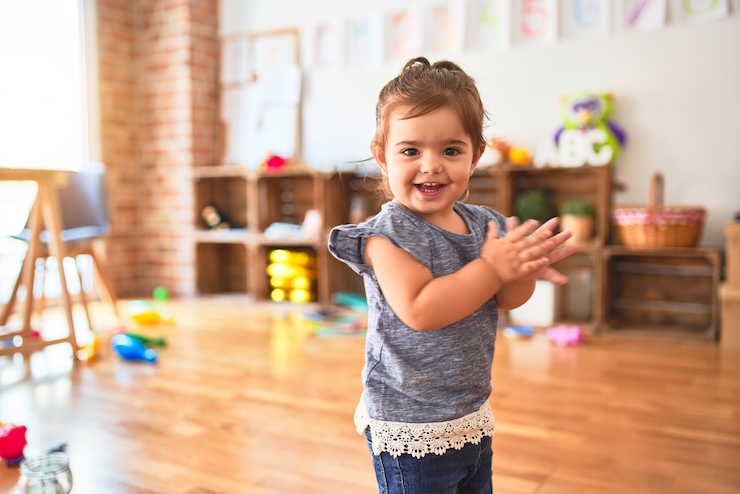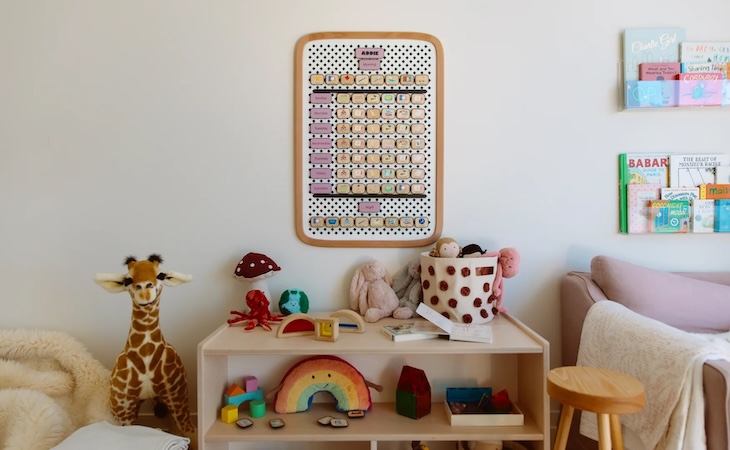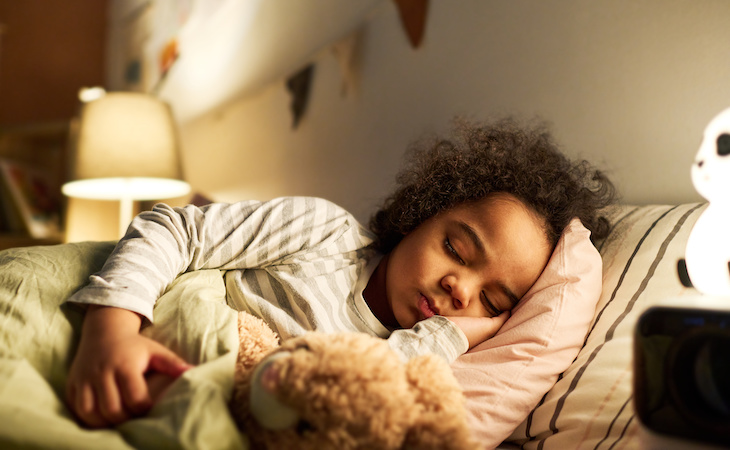A few months ago, I noticed my 3½-year-old starting most mornings by asking, “Am I going to school today?” or, “What are we doing today?” Every time someone would get ready to leave the house, she’d pipe up: “Where are you going?”
Despite my best efforts to communicate her school schedule, the complex routines of working adults, and her grandparents’ visits, I realized she had little concept of what her days—or ours—had in store, and it was…stressful for her.
That makes perfect sense: The human brain loves predictability, explains psychotherapist Siobhan Chirico, author of Climbing Crisis Mountain: A Guided Picture Book for Managing Meltdowns and Challenging Behaviour. “Not knowing what to expect is one of the most uncomfortable and distressing feelings we know—and kids feel the same way.”
She says when children feel unprepared (or unsupported) for new experiences, they can wind up stressed, overwhelmed, or anxious. The antidote to uncertainty is routine. “When we provide predictable routines for children, they learn to trust their environment and feel confident exploring and enjoying themselves,” says Chirico.
Knowing what’s coming up also allows a child to make predictions, form questions, and set expectations. It helps them develop their sense of time, explains Anna Levy-Warren, PhD, CEO and founder of Organizational Tutors, a network of executive functioning experts.
“When we provide predictable routines for children, they learn to trust their environment and feel confident exploring and enjoying themselves.”
-Siobhan Chirico, psychotherapist
Daytime routines can also help nights since anxiety around uncertainty can contribute to nighttime waking, nightmares, difficulty falling asleep, and more, Levy-Warren says.
But since their brains aren’t fully developed—and because they experience the world differently—young children require that routines be presented differently.
With some creativity, you can effectively communicate routines to even the youngest children, support their developing sense of self, and bring ease to your days and nights. Below is how to start.

How to establish a daytime routine for young children
1. Keep things simple
Routines are wonderful, but “there is no need for the entire day to be filled with routines,” reminds John Danial, PhD, licensed clinical psychologist and clinical director of Simi Psychological Group.
Pick spots of your day—most experts suggest mornings and evenings—where a routine might be most helpful. Then, assess how you envision your day and what you and your child need.
Keep tabs on how things feel, and incorporate more or less structure if you see signs of stress. “Routines don’t need to be too rigid,” Chirco reminds.
2. Utilize a routine tool
Toddlers and young children move through the world very differently than adults, explains Levy-Warren. “Although they live within our language-based, representational framework and they are learning through their physical and sensory interaction within it, they have not yet developed the ability to hold a representation of time in mind and use it to make predictions about the future,” she says.
That’s why visual charts or calendars are highly effective: They make routines more accessible and tangible, explains Sham Singh, MD, a psychiatrist at WINIT Clinic. “These tools help establish habits and make the process engaging and fun, developing a positive feeling about routines and structure,” he says.
I’ve found success with Charmspring—a new board-like product that uses “charms” to outline the day. My toddler loves seeing her morning routine (teeth and hair brushing, getting dressed, and having breakfast, for example) and what days of the week she has school in front of her at eye level. She can move the charms herself and help me put future days together. Plus, the product is stylish and doubles as a piece of bedroom decor.
A routine “board” could be a fun DIY project too: Place steps of a routine on movable cards and let your child help you rearrange them.
As kids grow, you can adapt your schedule to use more written language, calendars, and technology. “Starting the approach early benefits teenagers and adults because planning their day is a valuable skill, and our brains will always crave the predictability of knowing what’s next,” says Chirico.
I’ve found success with Charmspring—a new board-like product that uses “charms” to outline the day. My toddler loves seeing her morning routine (teeth and hair brushing, getting dressed, and having breakfast, for example) and what days of the week she has school in front of her at eye level. She can move the charms herself and help me put future days together. Plus, the product is stylish and doubles as a piece of bedroom decor.
3. Make routines collaborative
Young children crave—and are motivated to obtain—a sense of control, says Levy-Warren. “Routine allows them to achieve a sense of independence that they are figuring messy situations out themselves,” she says. This is vital for their development.
Of course, kids don’t naturally enjoy being told what to do, so she suggests inviting engagement from a place of shared problem-solving. For example, get down on their level and physically and mentally walk through the morning together, sketching or listing each concrete step.
Let your child take the lead on some tasks and let them delegate tasks to you. Give them choices too. For example, if reading a book is part of a routine, let your child choose the book, says Danial.
4. Communicate effectively
To help young children understand order, Levy-Warren favors “first-then” language (“First we’re going to have breakfast, then we’re going to play”).
Using a visual chart, invite conversation by asking your child, “What’s next?” Remember to communicate any changes to the routine in advance whenever possible too, Singh says. This will help a child prepare for what’s coming.
5. Remember: all kids are different
Finding the right “flow” for your child is essential. “Some kids respond to starting off a routine with the least preferred item on the list and moving toward the most exciting,” Danial says. “Others may benefit from starting off with something fun before transitioning to something more difficult and then ending with something fun.”
Pay attention to what transitions seem to bring up discomfort for your child. If they’re anxious about when their sibling gets home from school, put that visual on a routine board. This allows them to avoid worrying all day, says Chirico.
6. Model routines
There’s power in modeling, says Danial, who encourages caregivers to create routines for themselves and their children. He adds: “This can help the process remain fun for both you and your child.”
It can also motivate your child to be an active participant in their routine, and it creates a “norm” of routines in the household.
FAQs
What’s an example of a child’s routine?
A simple morning routine could include brushing teeth, getting dressed, and having breakfast. Using a visual chart or routine board can help make the steps clear and engaging for a child.
How can I help my child with anxiety?
Establishing predictable routines can help reduce uncertainty and stress. Using visual tools, clear communication, and allowing children some control over their routine can also provide reassurance and a sense of stability.
Check out more helpful content for parents and families from Cassie Shortsleeve:
- 6 Common Questions About Room Sharing for Kids, Answered
- 7 Tips to Transition Your Child From Crib to Bed
- 6 Travel Sleep Tips All Parents of Babies and Toddlers Need
- 6 Nighttime Potty Training Hacks From a Pediatrician
- A Quick Guide to Safe Baby Sleep—Plus 3 Top Product Picks From a Pediatrician
- 6 Ways to Manage Multiple Bed Times as a Parent
- Children and Naps: A Primer for Parents
- Could Baby Sleep Gadgets Be Doing More Harm Than Good?
- How to Prepare Your Child to Sleep on Their Own
- The Right Way to Use White Noise to Help Your Child Sleep
Photo courtesy of Charmspring




